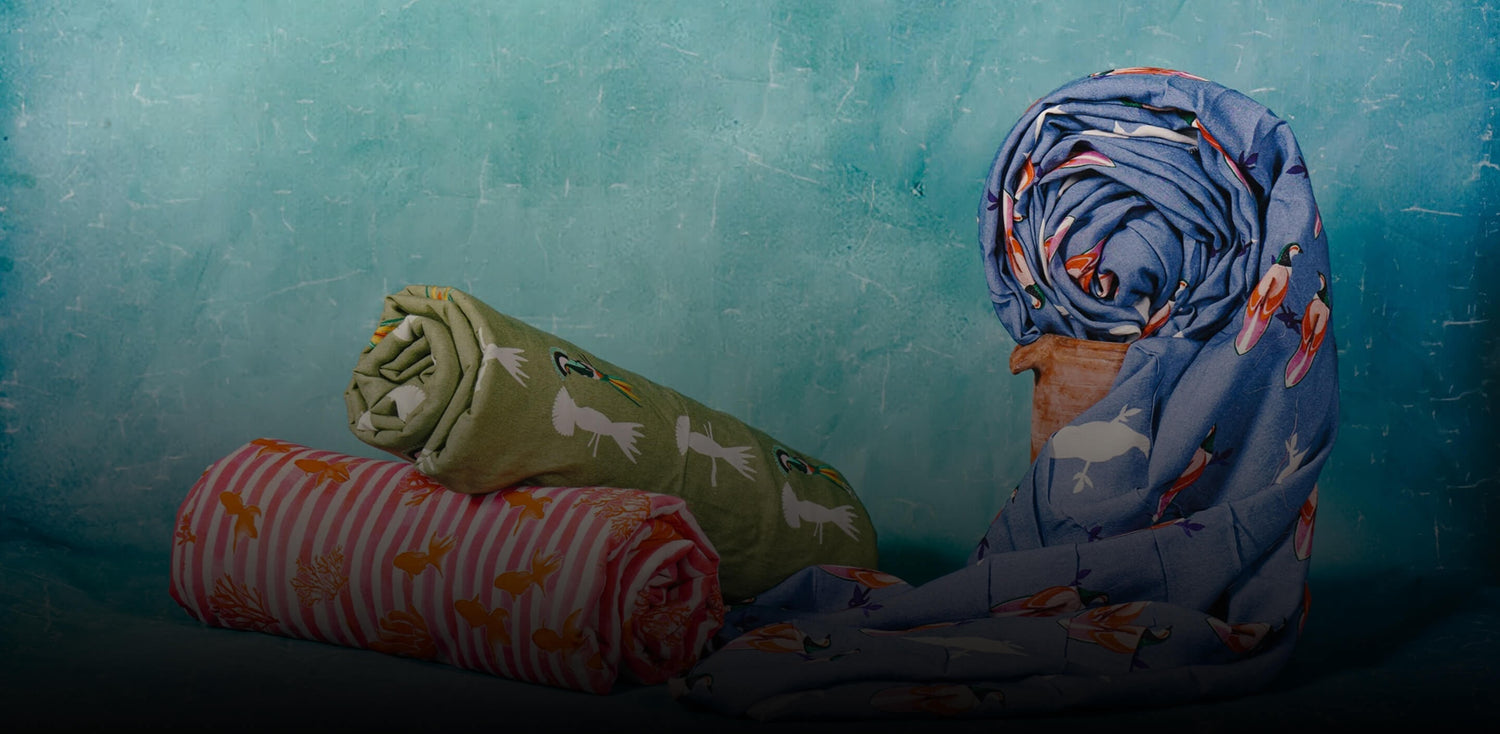The greige hues predominate in the textiles produced by the loom. The last step in creating the ideal look and feel for woven textiles are a series of wet processing treatments. It is the intention of this piece to focus on the supplementary processes used to the fabric in order to boost its worth by bestowing fresh features.
After yarns, textiles, and clothing are woven, sewn, or knitted, they undergo a process called "finishing" to enhance their visual appeal, improve their overall appearance, and add special qualities that will increase their usefulness. Because they may eventually be used in fabric or clothing, yarns are typically not finished until much later. The desired finish may easily increase the value of textile objects, rather than their basic form.
So today we are going to discuss various types of fabric finishing that are used in the textile industry.
Bleaching

If the cloth is going to be completed as white or given surface decoration, all-natural colors must be eliminated by bleaching. If the prior manufacturing process left behind discoloration or stains, this step is essential as well. Bleaching may be done on yarn as well as on the completed cloth. Cloth may be bleached by using either oxidizing or reducing bleaches, depending on the kind of dye that was originally woven into the fibers. Bleaching is done on cotton, wool, and silk. Synthetic fabrics do not need bleaching since their white color is an intrinsic property. Fabric fiber type is the primary factor in deciding the chemical employed.
Mercerizing

Mercerizing is a crucial step in preparing cotton fabrics for use. It's also put to work for polishing the linens. The fabric is kept tight while being treated with a strong solution of sodium hydroxide between 70 and 80 degrees Fahrenheit. Cotton fiber, which is normally a flat, twisted ribbon, becomes round and shorter when mercerized. The fiber develops 20% more strength and substantially more shine than before.
Shearing

Surface shearing is often used on pile-weave and napped fabrics to provide a sleek and attractive appearance. As a result of the napping process's plucking action, certain surface imperfections may appear. Shearing eliminates these imperfections. However, patterns may be sheared into pile materials to give the impression of a carved design with varying heights. A machine with rotating cylinders and helical blades is used for shearing. A lawnmower comes to mind while imagining its motion. After being sheared, the fabric is brushed manually to get rid of the snipped fiber ends.
Singeing

One of the first crucial procedures in preparing fabric, singing produces a silky texture. Before a fabric goes through further processes like dying or printing, it is singed to get rid of any lint, threads, fluff, or fiber ends. For the purpose of singeing, a grey good is passed at speeds between 100 and 250 yards (90 and 225 m) per minute through a gas flame, often with two burners on each side. Wherein the cloth is pulled through water and dried once it has been removed from the burners.
Beetling

It is common practice to beetle-finish linens. The strands become squashed by the wooden mallets' impact. By pounding the cloth repeatedly, the weave is effectively closed, and the fabric acquires a sturdy, flattened, and polished appearance. All table linens undergo this process, but bed and bath linens are never beetled. It is said that he practice of beetling is different from that of calendering.
Tentering

Tentering is a method used in a variety of stages of building. The fabric is frequently damp after being passed over a tender. The primary purpose of tendering is to dry and flatten the textile width. The tender's length-adjustable structure consists of two endless chains mounted on strong rails. For transporting the fabric's selvage into the heated container, the chains are attached with clips or pins. Once inside, a blast of hot air evaporates any remaining moisture. Fabrics made of wool or knit fabric are commonly framed with pins, whereas cotton textiles benefit more from clip frames. Occasionally you may see tiny holes or patterns in the selvages.
Calendering

Calendering is a kind of steam ironing that gives fabrics a shiny sheen. The method used differs based on the final product's purpose. Large machines with at least two rollers are called calendars. The former is often constructed of steel, while the latter is typically composed of warmer materials like wood, paper, cotton fiber, corn husks, or a hybrid of these two. Vertical frames support the rollers.
Up to seven rollers, including four steel rollers and three horn husk or cotton rollers, are used in plain rolling calendars. Gas or steam may be used to heat the steel rollers. The cloth is pushed rapidly through the calendering machine between the roller gaps. The goods are compressed between 40 and 60 tonnes of force (550-827 MPa) and at a rate of 150 yards (135m) per minute before being coiled on the machine's back.
Moire finishes

When a fabric is given a moire finish, tiny crenelated or ridged rollers are used to emboss or press the fabric's surface, creating an appealing, glossy, wavy pattern. Fabrics having rib effects in the filling provide the most desirable Moir effects. The pattern is rolled onto the tufts of filler yarn. The shine is produced by light scattering off the embossed lines.
Pressing

When working with wool fabrics, pressing is a common technique for removing surface short hair filaments. This pressing method is analogous to calendering.
Embossing

Embossing is the process of creating a relief image on a fabric by running it through a set of heated, engraved rollers. The method may be used for clothes produced from any fiber, with the exception of wool. To keep the embossed design in place while washing and ironing, use cool water and mild detergent, avoid bleach, and iron on the reverse side of the fabric while it is still damp.
Cloth finishing, as you can probably see from this article, is rather involved and involves many different procedures to transform raw fabric into the numerous features we have come to know and love. The significance of our understanding of fabric manufacturing and the methods we will continue to utilize in our pursuit of a more sustainable fashion future is a lesson I'd want you to take away from this. Since all of our apparel is constructed from fabric, it is crucial that we consider the long-term viability of the textile industry and the manufacturing practices that provide our clothing. If a fabric has gone through many of these steps just to be usable in the fashion industry, then it should be used to its full potential, which means reused over and over again until it is no longer usable, which is yet another reason why upcycling and repurposing the textiles we already have in circulation is so important.
We also happen to be a magnet for suggestions, and would love to catch yours….throw us yours on hello@fabriclore.com





